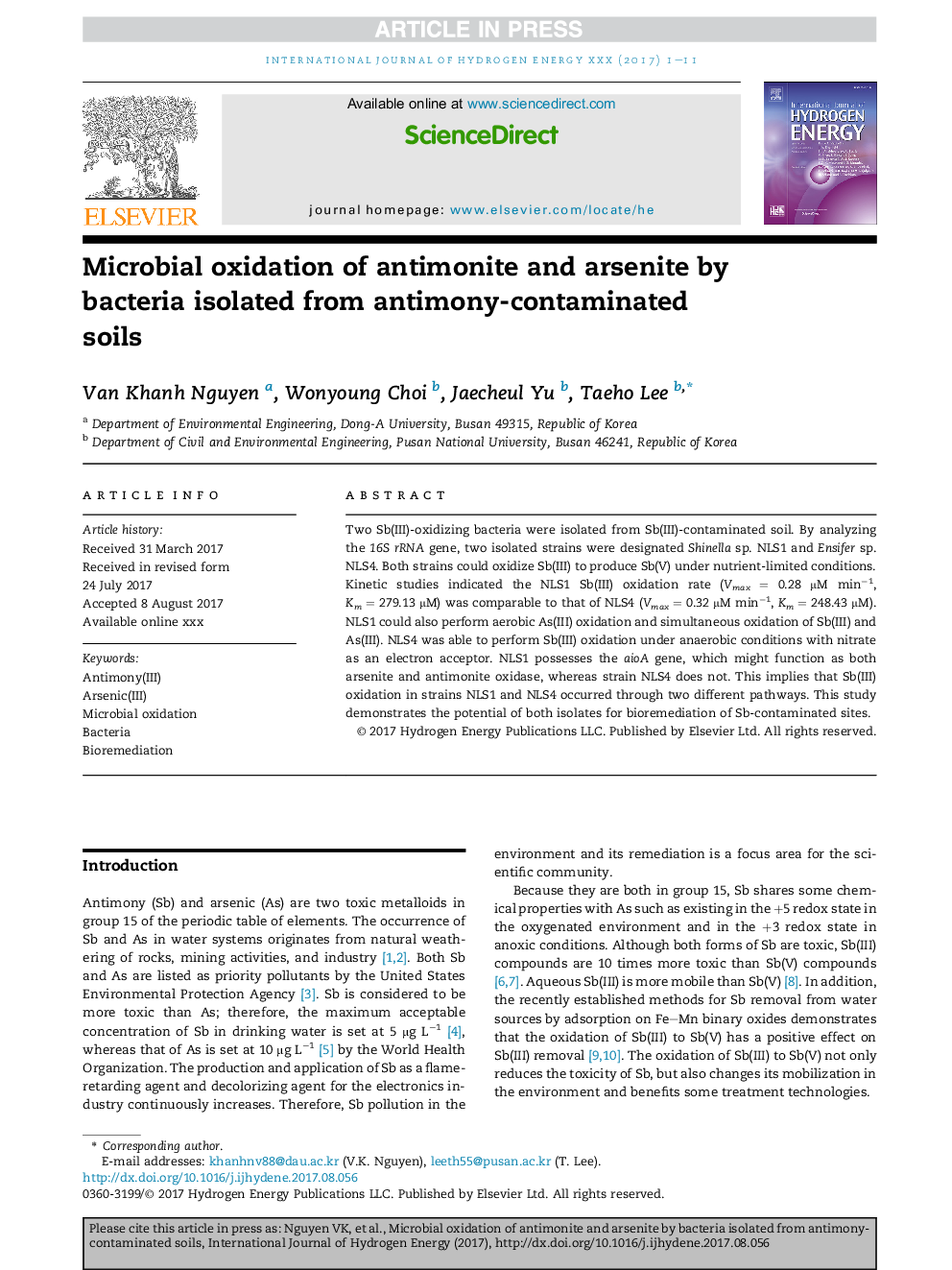| Article ID | Journal | Published Year | Pages | File Type |
|---|---|---|---|---|
| 7709783 | International Journal of Hydrogen Energy | 2017 | 11 Pages |
Abstract
Two Sb(III)-oxidizing bacteria were isolated from Sb(III)-contaminated soil. By analyzing the 16S rRNA gene, two isolated strains were designated Shinella sp. NLS1 and Ensifer sp. NLS4. Both strains could oxidize Sb(III) to produce Sb(V) under nutrient-limited conditions. Kinetic studies indicated the NLS1 Sb(III) oxidation rate (Vmax = 0.28 μM minâ1, Km = 279.13 μM) was comparable to that of NLS4 (Vmax = 0.32 μM minâ1, Km = 248.43 μM). NLS1 could also perform aerobic As(III) oxidation and simultaneous oxidation of Sb(III) and As(III). NLS4 was able to perform Sb(III) oxidation under anaerobic conditions with nitrate as an electron acceptor. NLS1 possesses the aioA gene, which might function as both arsenite and antimonite oxidase, whereas strain NLS4 does not. This implies that Sb(III) oxidation in strains NLS1 and NLS4 occurred through two different pathways. This study demonstrates the potential of both isolates for bioremediation of Sb-contaminated sites.
Related Topics
Physical Sciences and Engineering
Chemistry
Electrochemistry
Authors
Van Khanh Nguyen, Wonyoung Choi, Jaecheul Yu, Taeho Lee,
